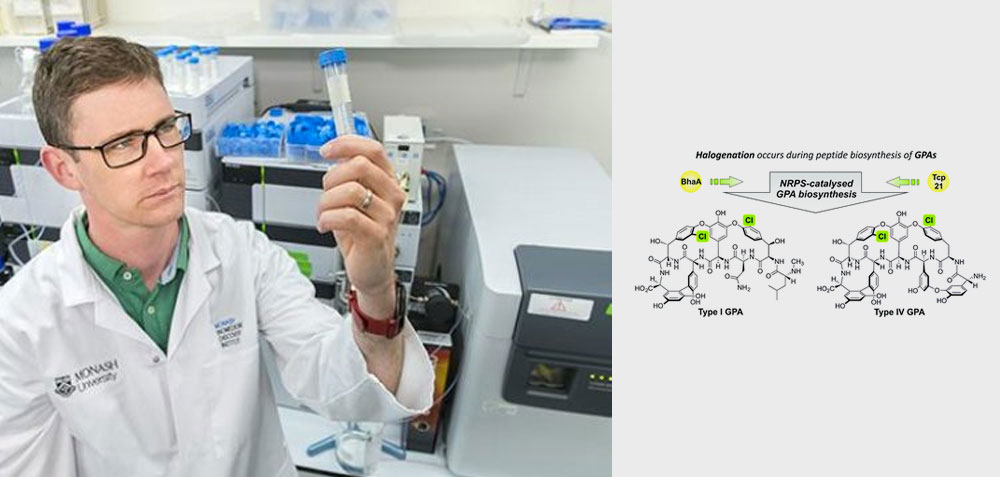
Insight into chlorine’s role in antibiotics may help overcome ‘superbug’ infections
Researchers in Australia and Germany are focused on a key step in the process by which a widely-used antibiotic is produced in nature (Science Daily, July 18; Chemical Science, July 13). This step involves incorporating a chlorine atom to the molecular structure, and plays a significant role in the antibiotic’s effectiveness.
The scientists were led by Associate Professor Max Cryle of Australia’s Monash Biomedicine Discovery Institute and Dr. Evi Stegmann of the University of Tuebingen in Germany. The team investigated the process by which vancomycin – a glycopeptide ‘antibiotic of last resort’ for serious and drug-resistant bacteria or ‘superbugs’ – is made naturally. Superbugs account for an estimated 700,000 deaths worldwide each year. Vancomycin is synthesized by certain soil bacteria, which use an ‘assembly line’ process to link amino acids together. These bacteria are grown by fermentation to produce vancomycin on a commercial scale.
Understanding when and where the chlorine atom is added in the natural synthesis process in soil bacteria means that scientists can manipulate that part of the process and change the antibiotic end product, notes Science Daily. Although vancomycin was used in this research, the finding may also apply to other types of antibiotics, and could pave the way for novel compounds to tackle superbugs.
Cryle is quoted in Science Daily as saying that “understanding the details within this process is challenging – this is what’s really held the field back.” Thanks to the new findings, “we can potentially start to make modified compounds, which is exciting,” he said.
The tools required for this highly challenging research took more than three years to develop, says Science Daily. The researchers are now working on ways to re-engineer vancomycin-type antibiotics.
